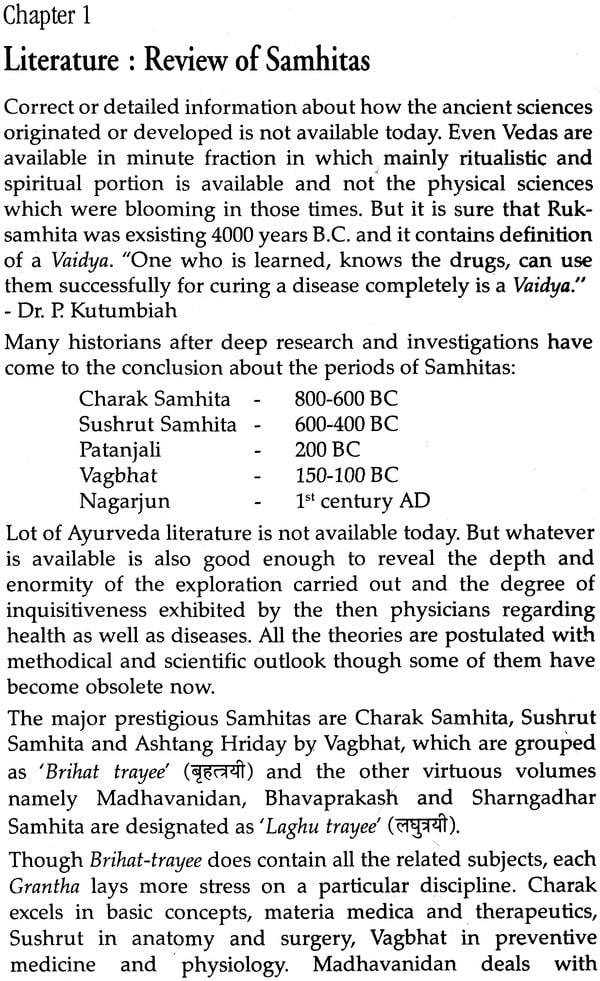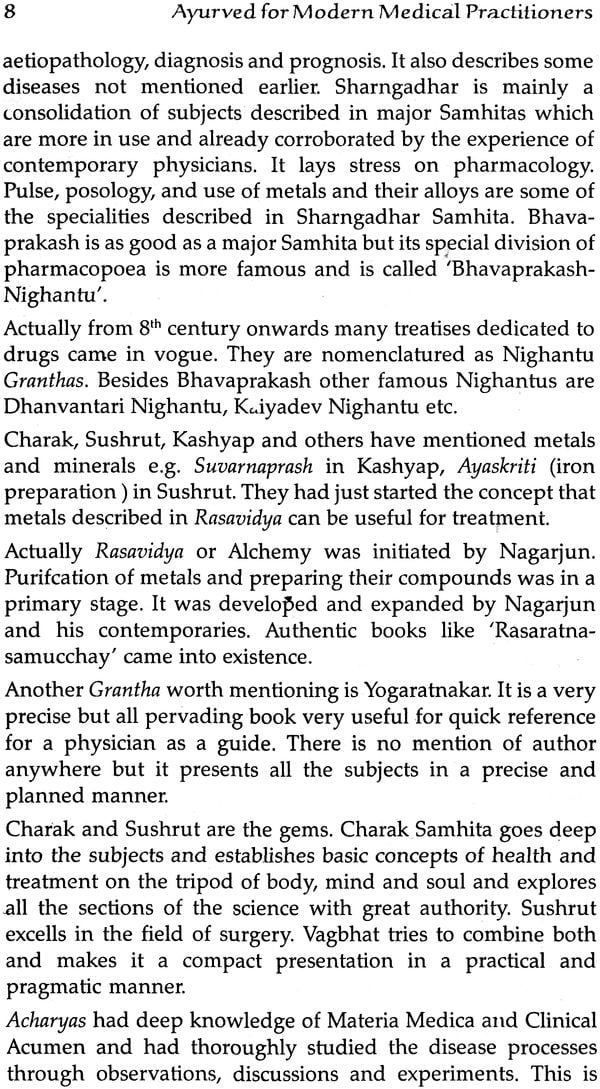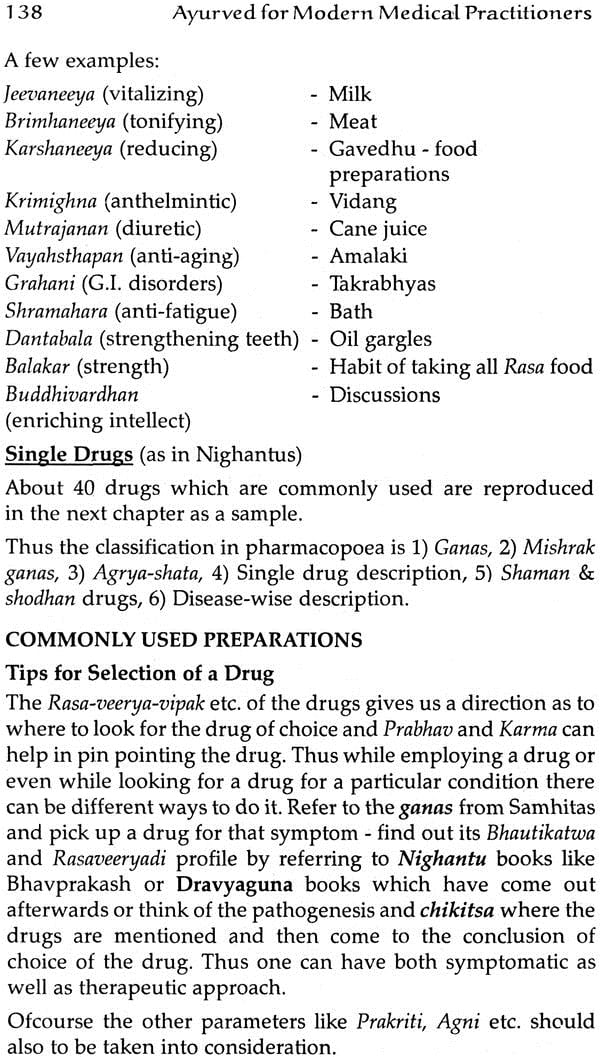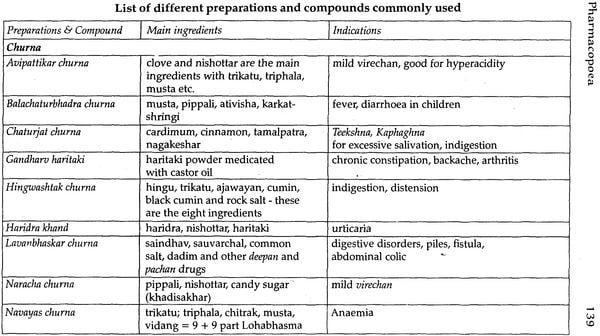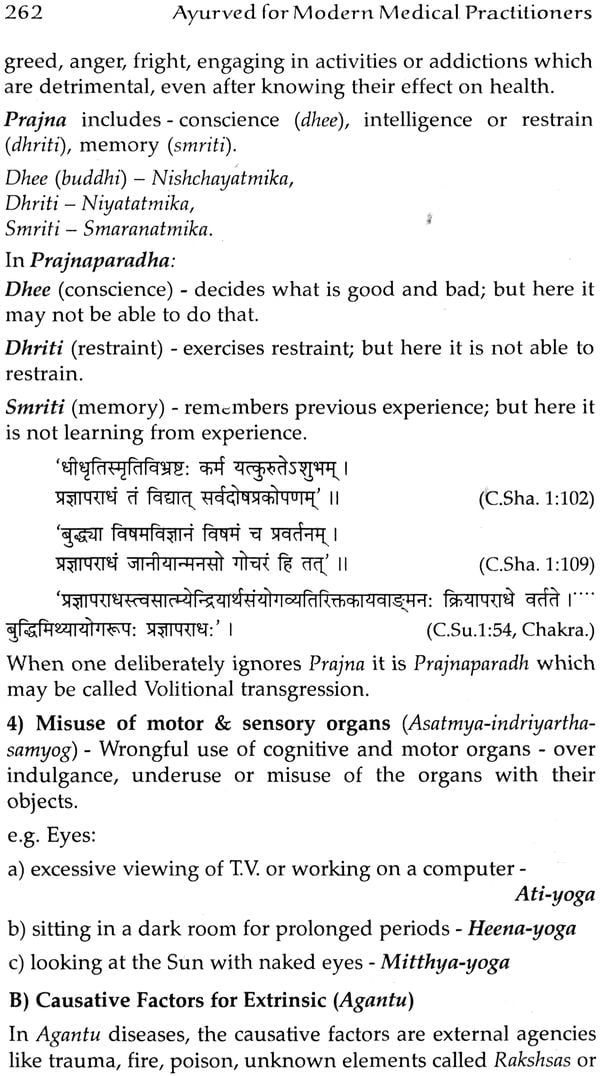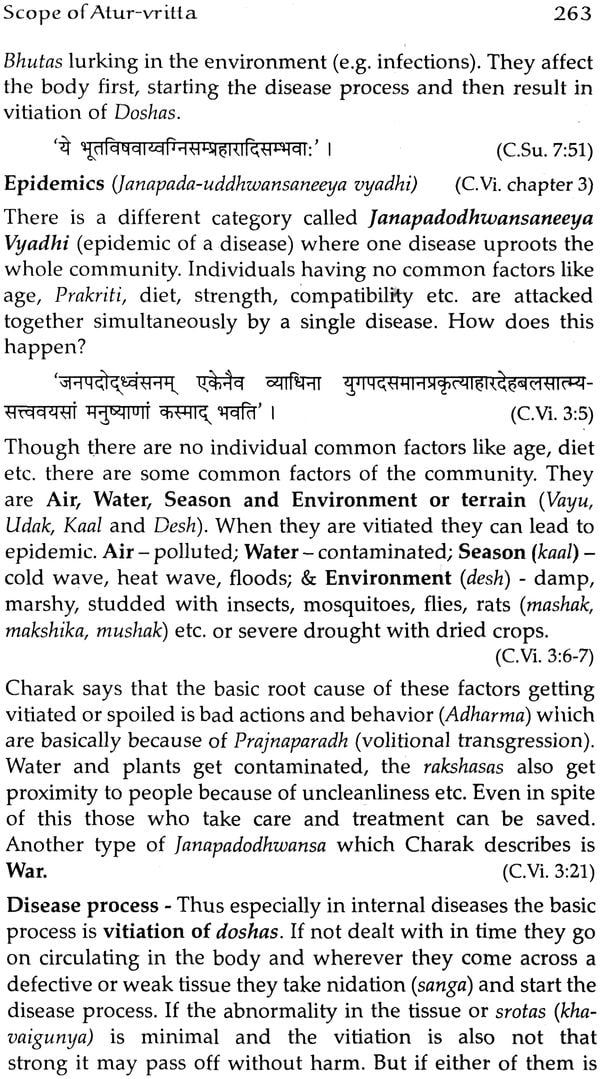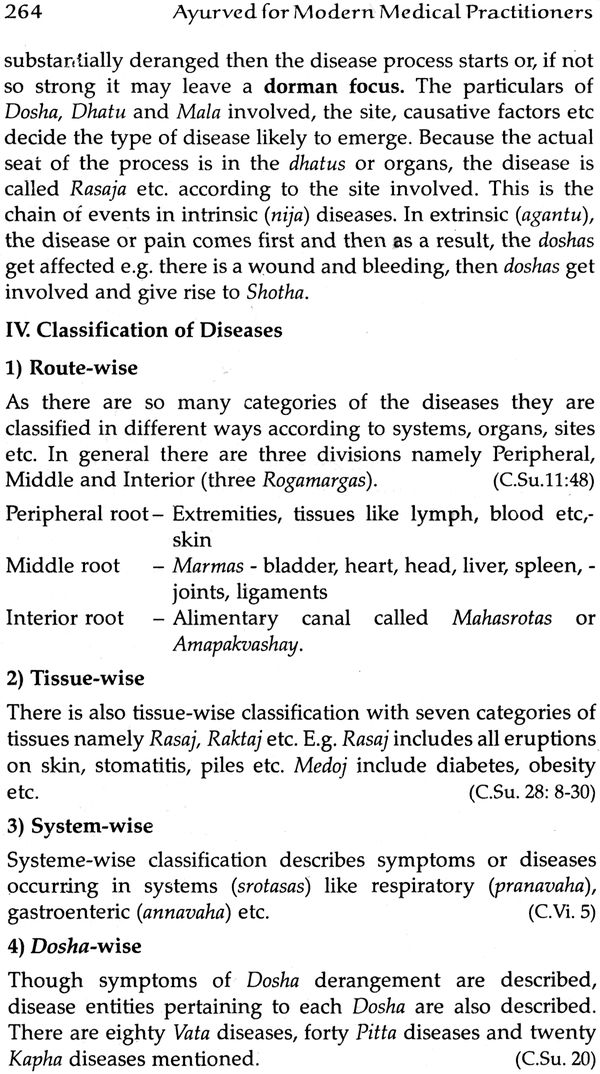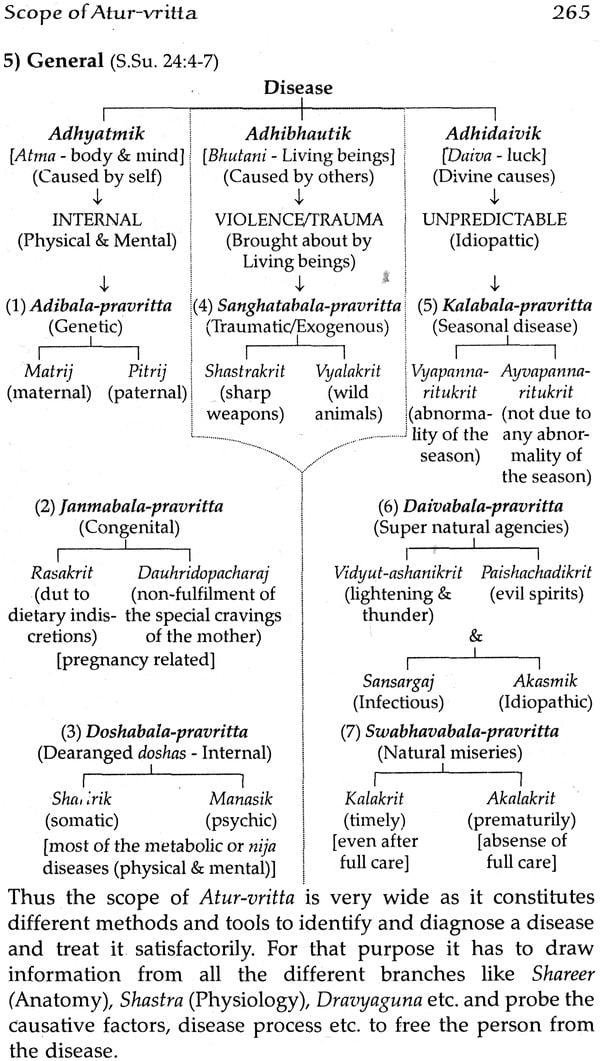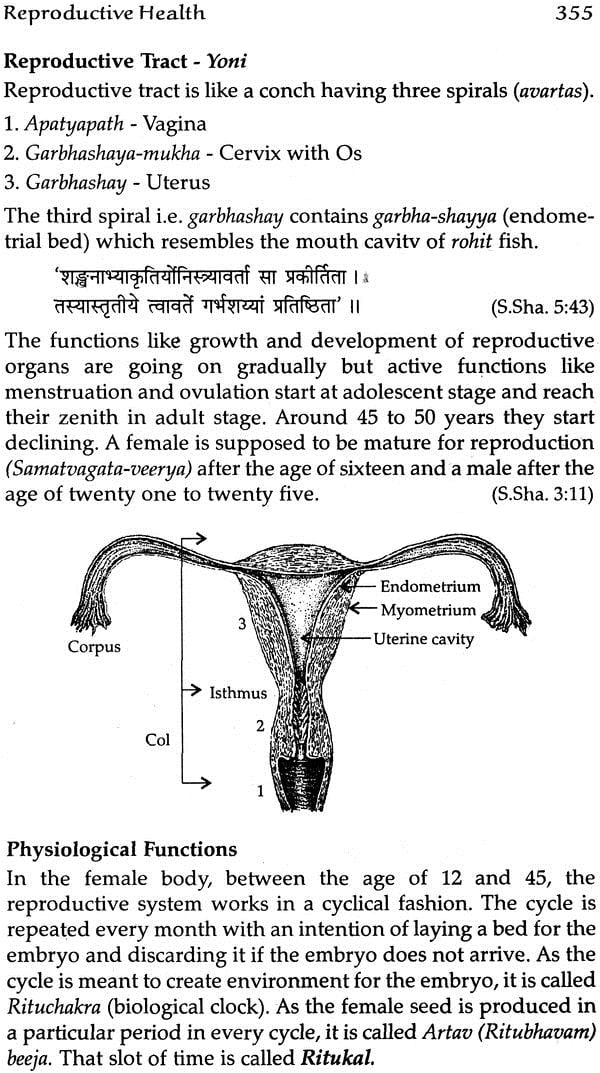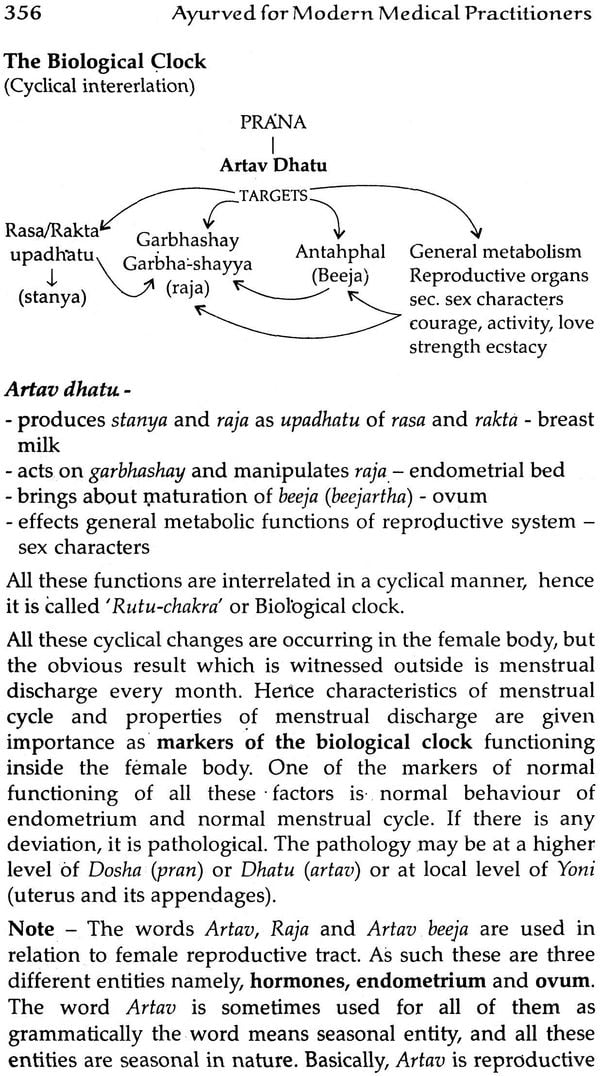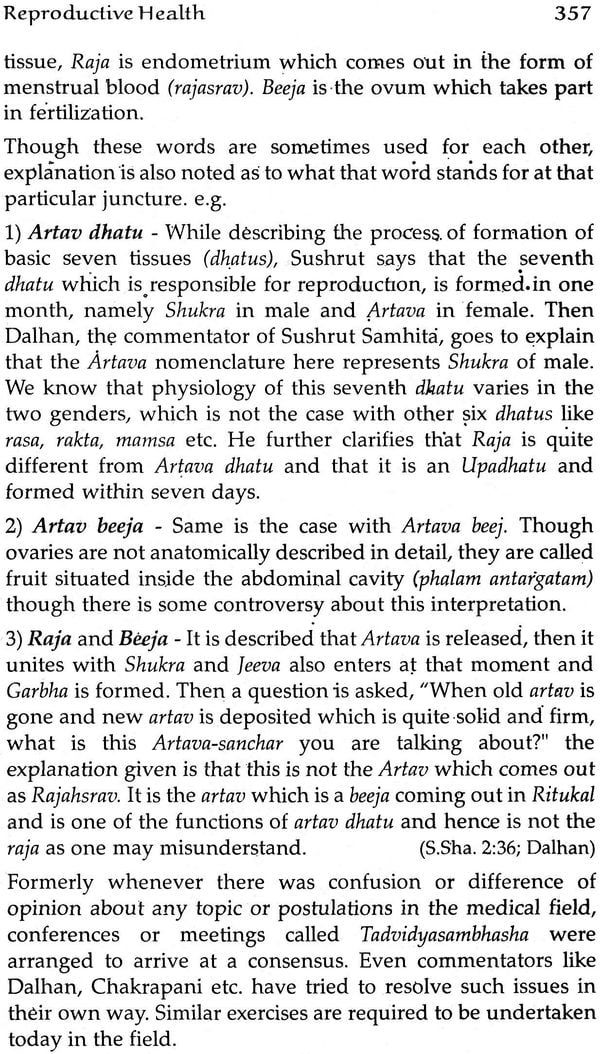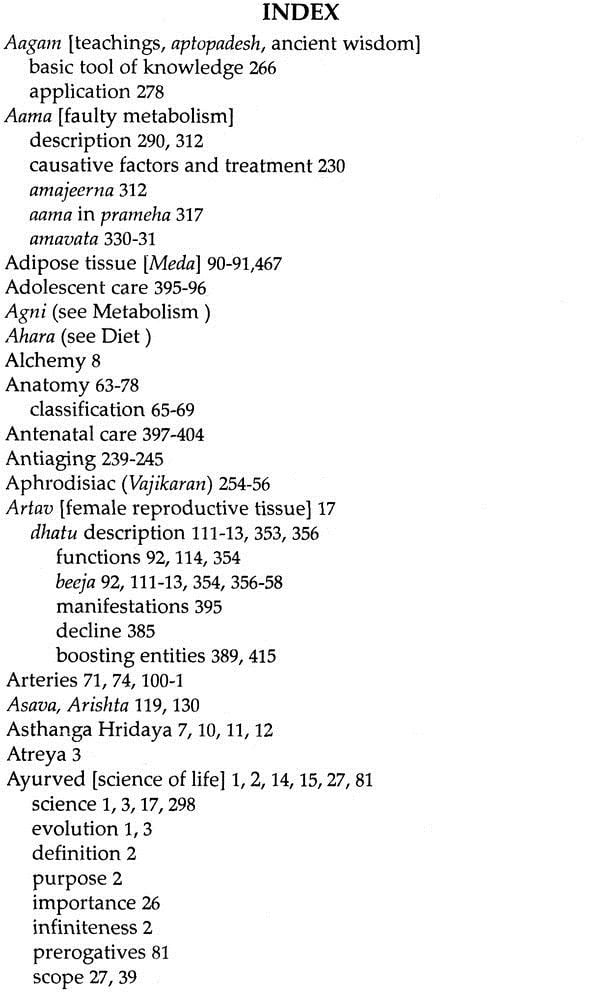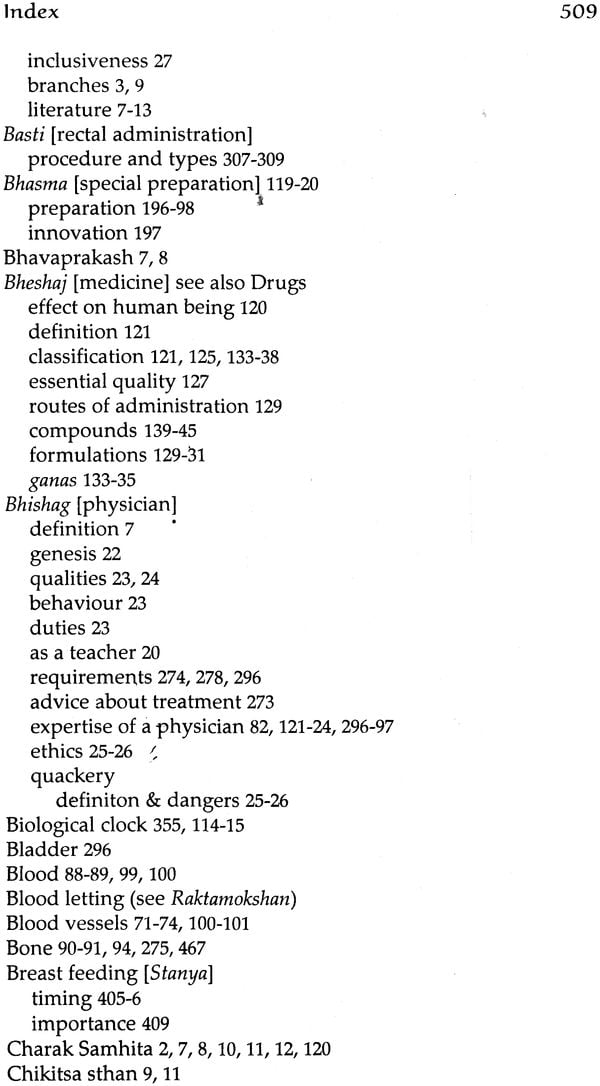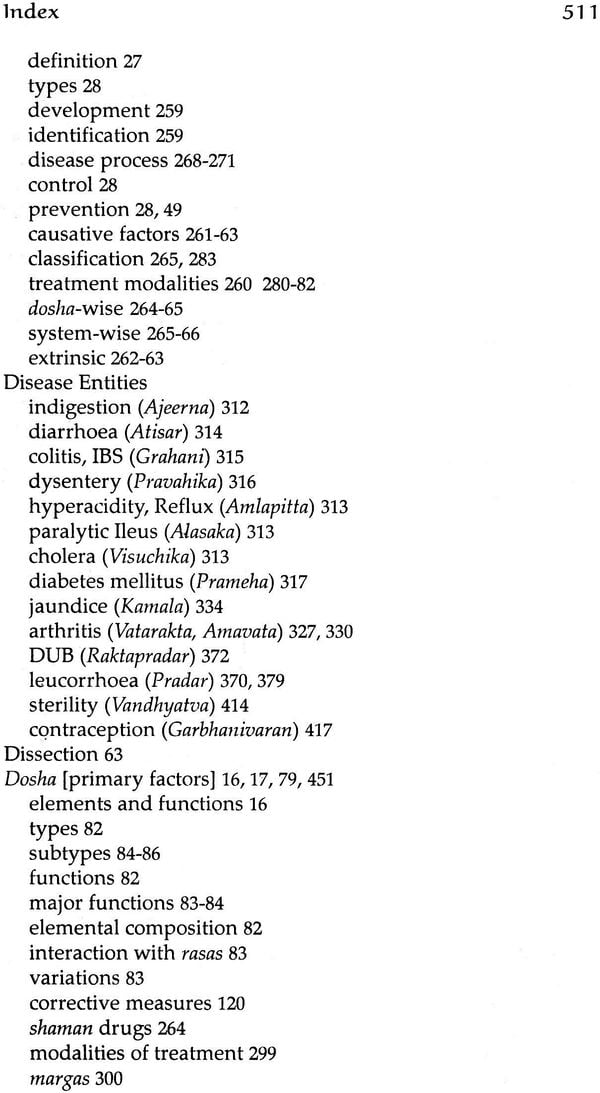
Ayurved for Modern Medical Practitioners
Book Specification
| Item Code: | IHE097 |
| Author: | Dr. Kumud S. Nagral. |
| Publisher: | Chaukhamba Sanskrit Pratishthan |
| Language: | English |
| Edition: | 2016 |
| ISBN: | 9788170843834 |
| Pages: | 534 |
| Cover: | Paperback |
| Other Details | 8.9” X 5.8” |
| Weight | 840 gm |
Book Description
The science of Ayurved is considered an Upanga (subpart) of Atharva Veda when it was written in text from. But 600.B.C. was the beginning of most creative period of this Ancient India Medicine as stated by Dr. P. Kutumbiah. It was in this period that a galaxy of medical teachers and stalwarts like Atreya the physician and Sushrut the surgeon made it a leading science of healthcare in the world and sowed the seeds of scientific temper. Keen observation discussion experiments documentation and putting them into practice for the betterment of the human race was the order of those times and went on up to 200 A. D. though it gradually declined after that so many concepts postulation and remedies are relevant and useful in health care of today.
This book explains them in an inquisitive manner which can be appreciated by a modern practitioner. It serves as a foundation material explained in an explicit way. Every statement is supported with reference from classical text of Samhitas. Clinical subjects are discussed more elaborately. They are described in modern scientific perspective without losing the fabric of Ayurvedic concepts. This is also useful for an ISM practitioner as a reference book. Any medical person who wants to have a holistic picture of the science of Ayurved will welcome this book.
Dr. Kumud Nagral Belongs to the first batch of integrated medical graduates of Maharashetra and is a strong proponent of integrated medicine. During graduation she received training at Podar J. J. & St. George Hospitals. She was on teaching faculty of Podar Medical College for sometime and then opted for family practice where she excelled and has worked in many medico-social endeavors. Reproductive health and family welfare is her specialty and has taken part in many clinical studies and trials she is a member of Intersystem Biomedica Ethics Committee.
Because of her scholastic abilities in both the science with proficiency in Sanskrit she can deal with the subject and reveal the concepts and contents of the Samhitas in a simplistic and intelligible manner and present an unbiased picture.
Ayurved the science of life stands for a holistic approach to the strategy of living of a human being. It lays emphasis on homeostatic harmony in the human body and its interaction with the environments. There is always a reminder that human being is a microcosm of the macrocosm of the Universe. It implies that the medical science is not a domain of only the physician and makes participation of patient nursing faculty etc. also mandatory. While defining health besides physical well being it so includes mental social cultural and spiritual health. It stresses that health is a supreme foundation of righteous path (Dharma), wealth (artha) Fulfillment of desires (Kama) and Eternal bliss (Moksha) hence it has to be preserved by all means.
Since long I have cherished an aspiration that every medical man in Indian should know what Ayurved stands for:
1. It is national heritage and science of life.
2. Even in today’s advanced medical science it can certainly contribute by way of its unique concepts like Rasayan, Swasthavreitta, Panchkarma, Prakriti, Agni etc.
3. It can give new conceptual clues for the specialty branches of modern medicine if probed deeply.
4. It can add choices to the present array of modalities and drugs available to the specialty branches through research.
5. Some ailments may be treated with a different perspective if Ayurved viewpoint is known to the physician especially a family physician.
6. Minor ailments can certainly be managed by simpler remedies.
To achieve this one needs to take a voyage through the treatises and Samhitas. It is difficult because of language barrier lack of interest difficulty in understanding the terms used etc. something should be available which is presented in modern scientific language short and interesting and not boring and at the same time doing justice to the themes of the Ancient Science.
As integrated with a sense of pride and duty, I have decided to put forth this kind of work in front of medical fraternity to acquaint them with our science if Life i.e. Ayurved.
While going through different chapters the reader may feel that there is repetition in some places, which is true. I had to resort to repetition. Even if the reader goes through only a particular chapter without reading other chapters he should have no difficulty in understanding the subject. With this intention the concepts behind that particular topic are repeated. While mentioning the herbs colloquial names are given more prominence as they can be understood better by an Indian reader.
Originals Sutras are quoted at many places. I hope that majority of Indian doctors know Devanagari script and are familiar with many Sanskrit words as we use them often in our day-to-day conversation. I have realized that sometimes the meaning is understood better by reading the sutras rather than going through its translation or interpretation in English.
An honest attempt is made to touch only the salient points which can be understood and made use of in today’s context of preventive and therapeutic aspects and lifestyles.
The description in the made to touch only the salient points which can be understood and made use of in today’s context it preventive and therapeutic aspects and lifestyles.
In all the chapters I have tried to describe the terms in today’s conventional medical language but it is very difficult to explain or provide exact meaning of the terms or concepts in that language of today’s conventional medicine. To make the reader familiar with the terms and gross meaning or concept implied in those terms a glossary is provided at the end. I hope it may help the reader in understanding the concepts.
It would not have been possible for me to bring out the book in this form without the valuable suggestions insistence on correct references and meticulous corrections on part of Shri J. D. Gupt of Chaukhamba Sanskrit Pratishthan and Dr. Jayashree a reproductive endocrinologist and a research scientist of repute and of course. I am indebted to my husband Dr. S. I. Nagral who is the main inspiration behind this Endeavour. The author thankful to all of them.
I am aware that this book has covered only a fraction of the science and so many concepts are not discussed. But as noted earlier this is an attempt to give a glimpse of the science as if browsing through a windows.
I reviewed the pre –press script of the book “Ayurved for Modern Medical Practitioners” authored by Dr. Kumud S. Nagral. The book contains an authentic synopsis of Ayurveda and its basic tenets and is a rich guide for study of the subject for such seekers who do not belong to the core Ayurvedic fraternity but are interested to study and practice Ayurveda. Besides there are a large number of Ayurvedic doctors who practice Ayurvedic Medicine and are interested to practice Ayurveda as complimentary medicine but are reluctant to study full text of classics the present book produced by Dr. Nagral will be a good study guide for such readers.
Ayurveda is the oldest system of medicine in the world its antiquity going back to the ancient Vedas. It has remained in unbroken professional practice for thousands of years in India and several other South-East Asian countries. The classical wisdom of Ayurveda has survived to the present times through two sets of classical texts popularly called Brhattrayi- Caraka, Sustra, Vagbhata, and Laghutrayi- Madhava, Srngadhara, Bhavapraksha. These texts describe in great details the fundamentals principles diagnostic therapeutics and material medica of Ayurveda. These enormously rich encyclopedic texts are the treasure of traditional wisdom on health care and cure. However due to changing epidemiological scenario and health needs to develop this ancient science if life as an evidence based system of medicine. Lots of efforts have been made in recent years in this direction. It is pertinent to observe that Ayurveda is already an evidence based science. Whatever has been conceptualized and described in Ayurveda is the knowledgebase tested and developed during last few thousand years utilizing the established parameters of science viz 1. Pratyaksa direct observation 2. Animana Inferential evidence 3. Aptopadesa Scriptural evidence and 4. Yukti Pramana or experimental evidence. Mass acceptably and long standing use are the secondary evidence which establish the safety and efficacy of Ayurveda. However according to contemporary needs the above mentioned conventional evidence alone is not enough. There is a need to gather new scientific evidence of strengthen the traditional claims. Development of new contemporary literature and interpretation of Ayurvedic concepts in the understanding and language of today’s science is the first need of the day. Dr. Nagral book is a positive step in this direction.
Amimamsyanyacintyani prasiddhani svabhavatah|
Agemenopayojyani bhesajani vicaksanaith||
The drug which by their nature have own popular acclaim should not be debated but should be used by wise physician according to ancient texts.
It is in conformity with the above cited classical statement that HMPC in UK has proposed to set new norms for simplified procedure for registration of herbal products in European Union on the basis of their long standing use considering it as a major evidence for safety and efficacy of herbal products. HMPC states the rational behind the actual simplified registration procedure is to enable products which have been in long standing traditional medicinal use to be registered according to a simplified procedure because their safety and efficacy can be deduced from their long standing use in the specified conditions of use. The long traditions of use enables to waive requirement for clinical trails and preclinical studies.
Ayurveda and other ISMs are being practiced in India with a huge infrastructure which is standing almost parallel to the conventional modern medicine but in a very low cost. As per Governmental records there are over 3000ISM & H Hospitals with 60,000 hospitals beds. There are about 25,000 dispensaries and over 9000 licensed pharmacies with an estimated domestic market of ISM products to the tune of Rs. 10,000 crores. There are nearly 700000 registered ISM & H practitioners in this sector about 450 educational institutions with annual UG admissions. All this reflects a live-system of health care delivery. However often it is felt that this huge infrastructure has not been adequately utilized in public interest and there is a great need to consolidate this national facility and to maximize its utilization.
As stated earlier Ayurveda is millennia old science of life health and cure which has remained in unbroken practice since antiquity till date. In recent years its popularity has increased world over. It is intriguing why such an old knowledge should become increasingly popular in spite of tremendous advances in modern medical sciences. Probably because of its holistic premature approach and safe health promoting “Green Pharmacy” Ayurveda and similar other plant-based medicines are becoming popular. There is a great arousal of interest in such medications. It is reported that in the most developed countries like USA over 40 percent of the population uses natural products for their health needs. Such a growing demand has created a noticeable been in the natural products market and the estimated world market of such products is over 70 billion US Dollars which is growing with the rate that may touch 5 trillion by mid of this century reflecting a huge commercial opportunity where India has not yet succeeded to enter in spite of its rich natural resources and biodiversity. Many visualize it as a Medical Green Revolution. There is a need of more and more awareness of these facts among the positive health consumers and traders. For this there is an equally strong need to import working knowledge of the science of Ayurveda to all concerned. It is hoped that Dr. Nagral’s book will prove an useful aid for this purpose.
Ayurveda is being practiced as an independent Alternative System of Medicine in India besides its use as a complimentary alternative medicine in a wide rage of clinical situations by practitioners of western medicine as well as the practitioners of Integrative Medicine al over the world. Dr. Nagral’s work is directed more to benefit the latter categories of medical practitioners. There is a need to reorient and refresh such practitioners in such a way that they practiced this great oriental science of medicine with due rationale and relevance.
Ayurveda is an unique holistic healing science based on its own fundamental principle. The doctrine of Loka-Purusa Samya i.e. Macrocosm Microcosm continuum is the sheet anchor where the three principle power of nature sun water air are represented in our mind body system as the Biological trinity : Pittakapha-Vata respectively. This is an unique union of the individual and the environment based on Eco-genomic considerations.
Dharayanti jagaddeham kaphapittanilastatha||
As the moon the sun and air support the cosmos with releasing receiving and dispersing likewise kapha pitta and vata support the body with these three functions.
Tavabhavapi samsrtya vayuh palayati prajah ||
The moon wets the earth the sun dries it joined to both air sustains.
The three angles of the two triangles as depicted above have opposite attributes to each other and hence they are inherently empowered to curve their counterparts to create a state of balance and homoeostasis i.e. Dhatu-samya in the system which is mandatory to life nad health. Such a state of Dhatu-samya is effected by the law of samanya and Visesa i.e. homology vs heterology which forms the fundamental basis of all manifestation in mind body system both in health and diseases. The same forms the basis of therapeutic response of various medications.
Hrasaheturvisesasca pravrttirubhayasya tu ||
The similar increase the similar while the dis-similar depletes the same. This operates bilaterally.
Besides many other unique feature of Ayurveda the doctrine of Samsodhama and restoration of the integrity of Srotamsi i.e. the inner transport system of the body and promotion restoration of Ojabala or bio-immune strength are very vital factors in Ayurvedic medicine. Similarly promotion of Agni i.e. Biofire system responsible for digestion and metabolism is of vital significance. Thus samsodhana srotoprasadana Ojabala and Agnibala are the sheet anchors of Ayurvedic treatment. Ayurveda describes elaborate methods of such practices. The thirteen kinds of Agni as the range of Agnibalas the three kinds of Ojabala the three categories of bala-dosa from the fundamental consideration in Ayurvedic medicine which makes Ayurveda to stand distinguished from all contemporary healing sciences. A wise physician should assess these factors in the patient and should promote them.
Thus Ayurveda is more a patient and health oriented system of medicine in contrast to conventional western medicine which is essentially a diseases and drug oriented system. Ayurveda makes a holistic approach to the entire problem of health and diseases. This is why the Ayurvedic physician makes a simultaneous bifold approach to diagnostics namely Rogi-Roga Pariksa where determination of the prakrit of the patient is considered of prime significance.
Ayurveda conceives a hitherto unknown novel approach to the drug action minimizing the difference between a drug and food. Many Ayurvedic drugs are essentially nutraceuticals and they work on nutrition dynamic not so much on pharmacy dynamics. Thus Ayurveda propounds an unique concept of holistic pharmacology and thus opens newer vistas for research and development of new holistic medicines.
I have know the author of this book Dr. Kumud S. Nagral for many years and feel all pleasure to write a foreword and extend my greetings to her for contributing such a wonderful piece of literary work which fulfils the long-felt need. I wish this publication a success.
Basically Ayurved is a science through which we understand the life.
Conceptually it is a biological science and has some similarity with what we call molecular science.
Subsequently this nomenclature is applied in reference to the life and health of a human being and hence it was transformed into a medical science.
“The process of exploration and attempts to understand life started from time immemorial and hence it is said to have been originated from Brahma, the creator of the Universe. But it was transformed into a medical science around 3000 B.C. much before Greek medicine. It reached its zenith in the times of Charak and Sushrut (800-600 B.C.)” – Dr. P. Kutumbiah.
Sushrut Samhita describes how this medical science was initiated in today’s from.
The wise and learned sages intersected in the welfare of a mankind approached the Maharshi Divodas Dhanwantri, king of Kashi who was in Vanaprathashram with other Maharshi and prayed – “the environmental diseases. We cannot see their suffering and feel sorry for them. Hence we wish to learn the science of Ayurveda to allay their diseases to maintain their health and make them happy. Please teach us the science because in it lies the salvation, both material and spiritual. Please accept us as disciples.” And thus the science was instituted.
Charak Samhita describes it with an array of questions :
What is life?
Life is the correct combination of body sensory & motor organs mind and soul which has uninterrupted continuity.
Why Ayurved?
Life can be good or bad or happy or painful. This science describes the ways and means and the extent to which we can make it that way i.e. good or bad.
What is the Purpose?
Main purpose is to maintain the health (Physical, mental, spiritual) of the health and to cure the disease of the unhealthy.
Is it eternal or perishable?
It is eternal as it existed since eternity, it is natural and so evident like in fire.
Why should one learn it?
To help human beings to attain righteousness prosperity, happiness and for self help and earn a living.
Brahma narrated the science of Ayurved to Prajapati who in turn taught Ashvinikumars. Indra who learnt from them documented the same in one thousand chapters and one lakh stanzas. Further it was divided into eight specific branches namely.
1. Shalyatantra (Surgery)
2. Shalayantantra (Ophthalmology & Otorhinolaryngology).
3. Kayachikitsa (Medicine)
4. Bhutavidya (Psychiatry)
5. Kaumarabhritya (Paediattrics)
6. Agadantra (Taxicology)
7. Rasayantantra (Rejuvenation)and
8. Vajeekaranatantra (Science of Fertility and virility)
It got the name ‘Ashtanga Ayurved’ by 1800 B.C.
Later it was acquired by three great sages namely Dhanvantari Punarvasu Atreya and Kashyap. Each of these personalities gave stress on the main clinical disciplines and developed them. Subsequently they evolved as Dahnvatari Sampradaya (Surgery) kashyapo Sampradaya (Obstetris, Gynecology) & paediatrics) and Atreya Sampradaya (International Medicine). The tradition was perused and implemented in the form of training at different levels. Clinical application diagnosis, treatment etc. and documented the details meticulously in the form of Samhitas and Granthas by renowned personalities like Charak Sushrut Vagbhat and Madhavakar etc.
In this book an attempt is made to put before the modern medical practitioner of India, an overall view of different facets of the science of Ayurved. A window is created and as one browses through different topics if further interest develops one may go deep into it through conventional ways of study of Ayurved.
But even this preliminary work may help in inculcating a more holistic attitude while dealing with problems and diseases in day to day practice. If that happens it fulfills the aspiration behind this Endeavour.
| Introduction | 1 |
| Section I |
| Medical Education and General Concepts of Health Care |
| Chapter 1 | Literature – Review of Samhitas [layout of sections chapters and contents] | 7 |
| Chapter 2 | The Human Being [Genesis of Panchamahabhutasand Dosha-Dhatu-mala] | 14 |
| Chapter 3 | The making of a Physician [Selection Admission, Training and Registration] | 19 |
| Chapter 4 | Professional Practice and Ethics [Professional conduct and duties Ethics] | 23 |
| Chapter 5 | Positive Health [Concepts of positive Lifestyles (swasthavritta) leading to positive Health] | 27 |
| Chapter 6 | Swastha-vritta [Concepts of Preventive and Social Medicine and Rules of ethical Behaviour] | 30 |
| Chapter 7 | Ritucharya [Seasonal cycle Regimens for each Season] | 41 |
| Chapter 8 | Prakriti [Genotype and phenotype Constitution Concepts and Application] | 50 |
| Chapter 9 | Agni [food metabolism Tissue and cell metabolism] | 56 |
| Section II |
| Anatomy and Phygiology [Rachana Shareer and kriya sharer] |
| Anatomy |
| Chapter 1 | Classification of Body Parts [General membranes, organs, systems, tissues, Chest and Abdomen – 15 major organs, Head and Neck cognivite organs and vessels Other entities bones joints plexuses etc. | 63 |
| Chapter 2 | Vessels and Systems [Vessels, Channels Systems Vital points Surface anatomy] | 71 |
| Physiology |
| Chapter 3 | Basic Concept – Dosha-Dhattu-Mala | 79 |
| Chapter 4 | Digestion (Aharaparinaman) | 95 |
| Chapter 5 | Circulation (Rasasamvahan) | 99 |
| Chapter 6 | Metabolism (Dhatuparinaman) | 102 |
| Chapter 7 | Respiration (Shwasan) | 106 |
| Chapter8 | Excretion (Malavisarjan) | 108 |
| Chapter 9 | Reproduction (Prajanan) | 111 |
| Section III |
| Pharmacology – Pharmacopoea - Dietetics |
| Chapter 1 | Basic Pharmacology | 119 |
| Chapter 2 | Pharmacy [Pharmaceutics and Drugs, Pharmaceutical preparation] | 127 |
| Chapter 3 | Pharmacopoea [Ganas Agryashata Commonly used Preparations] | 132 |
| Chapter 4 | Single Medicinal drugs [description of forty selected drugs] | 146 |
| Chapter 5 | Rasa-shastra [Overview Concept of use of Metals safety efficacy Rasaushadhis and bhasmas] Preparations] | 196 |
| Chapter 6 | Ahar - dietetics [Importance of food and Rasa Groups and Pharmacology of individual food articles Diet procedures Ahar and health] | 203 |
| Section IV |
| Rasayan and Vajikaran [Concepts & Modalities] |
| Chapter 1 | Rasayan [Concepts Categories Methods Modalities & Actions; Specific Rasayanas by Vagbhat General Considerations] | 233 |
| Chapter 2 | Vajikaran Rasayan, Vrishya and Vajikar Reproductive tissue, the product Methods and Prerequisites Drugs and Regimens] | 244 |
| Section V |
| Atur-vritta – General Medicine [Clinical Methods, Diagnosis and Therapeutics Disease Entities] |
| Chapter 1 | Scope of Atur-vritta Clinical methods Knowledge of disease process and treatment] | 259 |
| Chapter 2 | Diagnostic Criteria and General Principles Rogi-Pareeksha, Roga-pareeksha, Rogavishesha-vijnam General Pathogenesis of a Disease] | 266 |
| Chapter3 | General Principles of Treatement Dosha-wise Sytem-wise Tissue-wise Pathway of Diagnosis and Treatment] | 274 |
| Chapter 4 | General Therapeutics The Two Modalities Shaman and shodhan General guidelines for treatment dosha-wise and Infrastructure of system-wise] | 280 |
| Chapter 5 | Panchakarma specialty and Basic Principles of Shodhan, Pre-panchakarma procedures and Main Procedures] | 299 |
| Chapter 6 | Digestive Disorders [Ajeena Alaska, Visuchika, Atisar Grahani, Pravahika] | 312 |
| Chapter 7 | Prameha Diabetes [Aetiopathology, types treatment Peedikas] | 317 |
| Chapter 8 | Sandhivata – Arthritis [Two types Vatarakta and Amavata Miscellaneous Entites] | 326 |
| Chapter 9 | Kamala – Jaundice [Bahupitta, Ruddhapatha (Infective & obstructive) | 334 |
| Chapter10 | Symptomatic Treatment [Fever Respiratory diseases digestive Disorders joint disorders URTI Psychosomatic disorders Skin disease Miscellaneous entities] | 336 |
| Chapter 11 | Surgery [General note Ksharasutra] | 342 |
| Section VI |
| Kaumarabhritya [Gynaecology, Obstetrics and Paediatrics ] |
| Chapter 1 | Reproductive Health | 353 |
| Chapter 2 | Physiology of Menstruation | 359 |
| Chapter 3 | Yonivyapat – Gynaecological disorders | 333 |
| Chapter 4 | Raktapradar - DUB | 372 |
| Chapter 5 | Pradar – Leucorrhoea | 379 |
| Chapter 6 | Menopause | 385 |
| Chapter 7 | Conception – Garbhasambhav | 390 |
| Chapter 8 | Safe Motherhood | 395 |
| Chapter 9 | Antenatal and Postnatal management | 405 |
| Chapter 10 | Sterility – Vandhyatva | 414 |
| Chapter 11 | Family Planning | 417 |
| Chapter 12 | Child Care – Kaumarabharitya | 421 |
| Chapter 13 | Diseases of Children | 435 |
| Chapter 14 | Balagraha [Affrication with grahas] | 442 |
| Section VII |
| Database | |
| [Basic Information] |
| Article 1 | Basic Terms | 449 |
| Article 2 | Doshas | 451 |
| Article 3 | Vata | 454 |
| Article 4 | Pitta | 458 |
| Article 5 | Kapha | 461 |
| Article 6 | Srotasas – System | 464 |
| Article 7 | Dravyaguna | 470 |
| Article 8 | Rasa | 473 |
| Article 9 | Vipak | 477 |
| Article 10 | Veerya | 479 |
| Article 11 | Prabhav | 481 |
| Epilogue | 483 |
| Appendices |
| 1 | Abbreviations | 485 |
| 2 | Posology [Man-paribhasha] | 486 |
| 3 | Botanical Index | 488 |
| 4 | Glossary | 491 |
| Index | 508 | |
| Bibliography | 519 |
